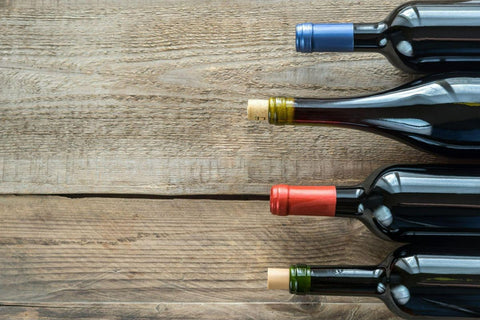What should you consider when storing your red wines at home?
- The wine itself
- The conditions of your stockroom or cellar
- The orientation of the bottle
- The movement of the bottle
- Additional tips for storing an opened bottle of wine
At Ralph’s, we don’t just provide some of the best red wines in the Philippines. We also like to keep our patrons informed on how to preserve and store wines and spirits of all kinds.
In this article, we focus on reds, which are the most demanded type of wine in the Philippines. Read on to discover the important factors that will influence your wine’s longevity and aging.
The wine itself

There are slight variations on how you should store different kinds of wine. In the case of reds, most reach their peak at 3-5 years, but finer ones age well for over a decade.
For example, Port wines can cellar for 10 up to 50 years, while Merlots peak at anywhere from 3 to 15. Among our crowd pleasers, we recommend the Montes Classic Selection Cabernet Sauvignon 2020 and the Le Grand Noir Pinot Noir 2021 if you’re looking for something that gets better and better as the years go by.
The conditions of your stockroom or cellar
Light, temperature, and humidity play an important role in storing your wine.
For light, the rule of thumb is to keep your bottles in a cool, dark place. Sunlight causes certain amino acids in your wine to oxidize, changing the flavor, while ultraviolet rays can lightstrike the wine. So avoid sources of light as much as possible—both direct sunlight and fluorescent bulbs.
As for temperature, some wines should be chilled in a wine fridge until a few hours before serving. Other times, keeping bottles at room temperature or in a cellar is just what they need to enhance their flavor. In general, remember to store your wine at temperatures that don’t exceed 70°F, because cooking your wine makes it flat and hinders its aroma and flavor.
Finally, wines should be stored at an ideal humidity of 70%. Low levels of humidity may dry your corks, which will cause air to enter and may spoil your wine. While high levels of humidity will cause condensation on your bottles, which will damage the labels.
The orientation of the bottle
If you’ll notice, wine racks always position bottles on their sides. This is to keep the cork moist, which is crucial for wine storage. Wine can seep through a dried-out cork or age prematurely if the air is allowed to pass into the bottle.
There’s a contrasting rule for opened bottles of wine, but we’ll discuss that in more detail later.
The movement of the bottle
All movement causes vibrations, which in turn disturb the sediments in your wine and speed up certain chemical reactions, altering the rate at which it ages. So keep your bottles away from sources of vibration like appliances, heavy equipment, speakers, working vehicles, and the like.
Beyond storage, when moving the bottles from place to place, try to keep them as steady as you can for the same reason.
Additional tips for storing opened wine

While sealed bottles last much longer than opened ones, some bottles, like our bestselling Hopes End Red Blend 2019, can last 2 to 5 days if stored correctly.
Here are a few bonus tips for your uncorked wines:
- Again, keep them chilled and away from light—preferably in a wine fridge, but a regular refrigerator is better than nothing.
- Unlike with sealed bottles, store them upright to decrease the amount of wine that will be exposed to air.
- Use a wine preservation tool like an aerator or vacuum sealer. At Ralph’s, we have the excellent Coravin Model Two Elite Wine Preservation System, which contains more than 99.99% pure argon gas to protect the remaining wine from oxidation.
- Use a wine stopper or screw cap rather than the cork your wine came with—they’re specifically designed to keep bottles airtight.
Key Takeaway
Whether you’re a novice who is just beginning to grow a collection or have been doing so yet recently came across an unfamiliar brand or bottle, the best course of action is to narrow down your research to focus on that bottle specifically.
We’ve covered the basics of storing most red wines, but you might have to defer to specific storage directions for particularly rare bottles.
If you’re looking for some of the best red wines in the Philippines, look no further than our online shop at Ralph’s Wines and Spirits. Whatever you’re looking for, we’re sure to have a bottle that suits your taste!


